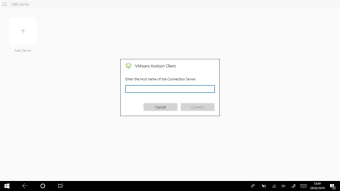A visual workspace app
Screenshots
VMware Horizon Client is a desktop virtualisation service that enables remote access to the workplace by separating the app and the desktop environment. This utility is excellent for productivity and it runs across platforms to ensure flexibility.
Powerful virtualisation
This productivity utility allows companies to create virtual desktops for remote workers. The VMware workstation technology ensures stability with every desktop OS running in a virtual machine.
That way, each static desktop can turn into a digital workspace. Horizon Client guarantees security too, with added privacy features and centralisation through a virtualization platform.
For companies, running everything through a single platform ensures streamlined management. The administrators can supply remote desktops and apps to end-users with the 'Entitle' feature.
Broad accessibility
By allocating data and resources to virtual platforms, all users can access the data centre from any device. This service exists for Windows and Mac, Linux, Android, and iOS. If you run on only one OS, you can try QVD Virtual Desktop, for example.
You can also use this programme as a Cloud service and access it through your Web client of choice. The most prominent among these is Vsphere.
Complicated interface
With regards to the user interface, it contains simplified management tools for virtual apps and desktops. As an administrator, you can deliver desktops to devices in minutes.
However, using the platform can feel convoluted for the non-tech-savvy. Userful Multiplatform boasts a much more straightforward UI.
Through this service, administrators get more control over the workplace in terms of security and data sharing, while the end-users access all relevant documents with ease.
This platform is free to download and use. However, purchasing the Premium version allows you to access more advanced and varied features.
Handy but could be better
VMware Horizon Client is an okay solution for managing remote offices and providing a flexible, secure experience for the end-user. However, most bigger companies will need premium features either way. It also consumes a lot of bandwidth and the platform is too complex for the average user.


